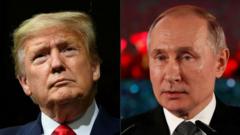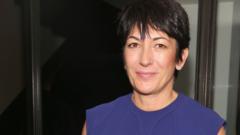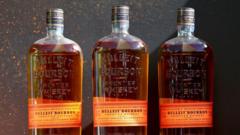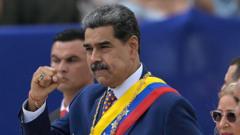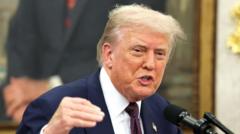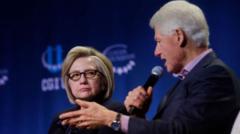The luxury goods market is experiencing turmoil with the introduction of tariffs, impacting both consumer prices and brand strategies, leaving executives anxious about navigating this new landscape.
Luxury Goods Industry Braces for Impact from New Tariffs

Luxury Goods Industry Braces for Impact from New Tariffs
As U.S. tariffs on EU products roll out, luxury brands face an uncertain future.
As tariffs on European Union goods take effect, luxury goods makers are facing significant challenges and uncertainty. Just a month ago, these businesses were optimistic about a landscape of deregulation, potential tax cuts, and robust market growth, anticipating a surge in consumer spending on high-end products. However, the recent announcement by the Trump administration imposing 20 percent tariffs on imports from the EU has thrown this sector into turmoil.
Now, luxury brands must prepare for the reality of potential price increases on their iconic items — expect a U.S. market where luxurious Chanel bags and Rolex watches become prohibitively expensive. American consumers, who accounted for 24 percent of the staggering $1.62 trillion global luxury market last year according to Bain & Company, may soon see higher price tags attached to products marked "Made in Italy," "Made in France," and "Made in Switzerland."
Euan Rellie, co-founder of investment bank BDA which focuses on the fashion industry, expressed concerns, stating, "The U.S. was supposed to be the savior of the luxury goods industry. The Trump administration has said overnight, ‘We’re not going to play ball.’ Luxury is in a very tough spot."
The situation has been further complicated by existing challenges in the luxury sector, including declining sales in China, economic slowdowns in Germany, and the aging population in Japan. This cocktail of complications has led brands to hesitate in discussing the repercussions tariffs may have on their operations and pricing strategies.
Major players in the market, including LVMH — the largest luxury goods conglomerate with brands like Dior and Louis Vuitton — have remained tight-lipped about the impending changes, despite the US market representing a substantial 25 percent of their revenue in 2024. Notably, Vuitton is the only prominent European luxury brand that has U.S. manufacturing facilities, having opened a factory in Texas during Trump’s earlier presidency.
Other well-known brands such as Burberry, Chanel, and Hermès have declined to comment on these developments, joining the ranks of Kering (which owns Gucci), Puig (owner of Carolina Herrera), and Tory Burch, who also opted to stay silent.
As uncertainty looms large over the luxury goods market in the U.S., brands will need to navigate this turbulent environment carefully, mindful of the potential shifts in consumer behavior and purchasing power.
Now, luxury brands must prepare for the reality of potential price increases on their iconic items — expect a U.S. market where luxurious Chanel bags and Rolex watches become prohibitively expensive. American consumers, who accounted for 24 percent of the staggering $1.62 trillion global luxury market last year according to Bain & Company, may soon see higher price tags attached to products marked "Made in Italy," "Made in France," and "Made in Switzerland."
Euan Rellie, co-founder of investment bank BDA which focuses on the fashion industry, expressed concerns, stating, "The U.S. was supposed to be the savior of the luxury goods industry. The Trump administration has said overnight, ‘We’re not going to play ball.’ Luxury is in a very tough spot."
The situation has been further complicated by existing challenges in the luxury sector, including declining sales in China, economic slowdowns in Germany, and the aging population in Japan. This cocktail of complications has led brands to hesitate in discussing the repercussions tariffs may have on their operations and pricing strategies.
Major players in the market, including LVMH — the largest luxury goods conglomerate with brands like Dior and Louis Vuitton — have remained tight-lipped about the impending changes, despite the US market representing a substantial 25 percent of their revenue in 2024. Notably, Vuitton is the only prominent European luxury brand that has U.S. manufacturing facilities, having opened a factory in Texas during Trump’s earlier presidency.
Other well-known brands such as Burberry, Chanel, and Hermès have declined to comment on these developments, joining the ranks of Kering (which owns Gucci), Puig (owner of Carolina Herrera), and Tory Burch, who also opted to stay silent.
As uncertainty looms large over the luxury goods market in the U.S., brands will need to navigate this turbulent environment carefully, mindful of the potential shifts in consumer behavior and purchasing power.


